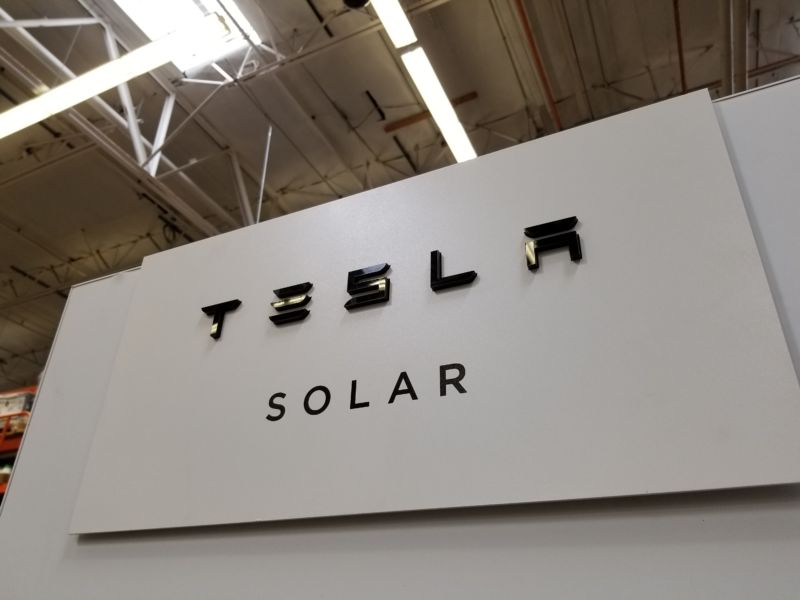

reader comments
152 with 79 posters participating
In Tesla’s first-quarter financial statement last week, the company said that it would revitalize sluggish solar panel sales by streamlining the purchase process. “Our residential customers can now purchase solar and energy storage directly from our website, in standardized increments of capacity,” the company wrote.
Now, the New York Times is reporting that Tesla intends to slash solar panel prices today, with Tesla Senior Vice President of Energy Operations Sanjay Shah telling the paper that “Tesla customers could expect to pay $1.75 to $1.99 per watt, depending on where they live” after a federal tax break. The Solar Energy Industries Association says the average cost of residential solar panels is currently $2.85 per watt, or $2.08 per watt with the federal tax break included.
Tesla’s plan to undercut its competitors is ostensibly possible because the company is eliminating many so-called “soft costs” of solar panel installation. Instead of sending contractors out to a house to design and optimize a solar panel installation, customers will now order solar panels online, in preset increments of power. Each increment will be able to produce 4 kilowatts (kW) of power with 12 panels.
The Times reports that “To further reduce costs and complexity, customers will be asked to do many of the tasks Tesla employees used to do. Homeowners will photograph electric meters, circuit breaker boxes and other equipment and send the images to the company, reducing the need for site visits.”
Ars Technica has contacted Tesla for confirmation of this report, and we’ll update if we receive a response.
In 2018, the National Renewable Energy Laboratory (NREL) released a paper saying that the biggest barrier to reducing residential solar panel prices was bringing down the soft costs that Tesla appears to be targeting. Soft costs are accrued as supply chain costs, labor costs, and sales and marketing costs—basically anything that doesn’t pertain to the physical construction of the solar panel itself.
Since Tesla acquired SolarCity years ago, it has been aggressive about cutting sales and marketing costs. Tesla discontinued SolarCity’s door-to-door marketing, it closed a number of SolarCity installation locations, and it discontinued a partnership with Home Depot. But those costs also had a return: they brought customers into the fold. So while Tesla cut solar costs, quarter after quarter it lost market share to SunRun and other major US solar companies.
Meanwhile, Tesla has been trying to get a massive solar factory in Buffalo, New York, up to full speed. The factory is intended to churn out not just solar panels but also the promised “solar roof” tiles that Tesla CEO Elon Musk has hyped for years. But last summer Reuters reported that Tesla and its partner Panasonic were experiencing assembly line issues, and Tesla says it won’t ramp up solar roof installation until later this year.
In Buffalo, Tesla has a hiring quota that it must reach this year to satisfy local government agreements. Tesla says it expects to meet the quota.
Correction: The story originally reported that Tesla planned to slash costs by 38 percent, but this included a federal tax break that Tesla customers would receive, while the comparable costs national average costs per watt did not include the federal tax break.


